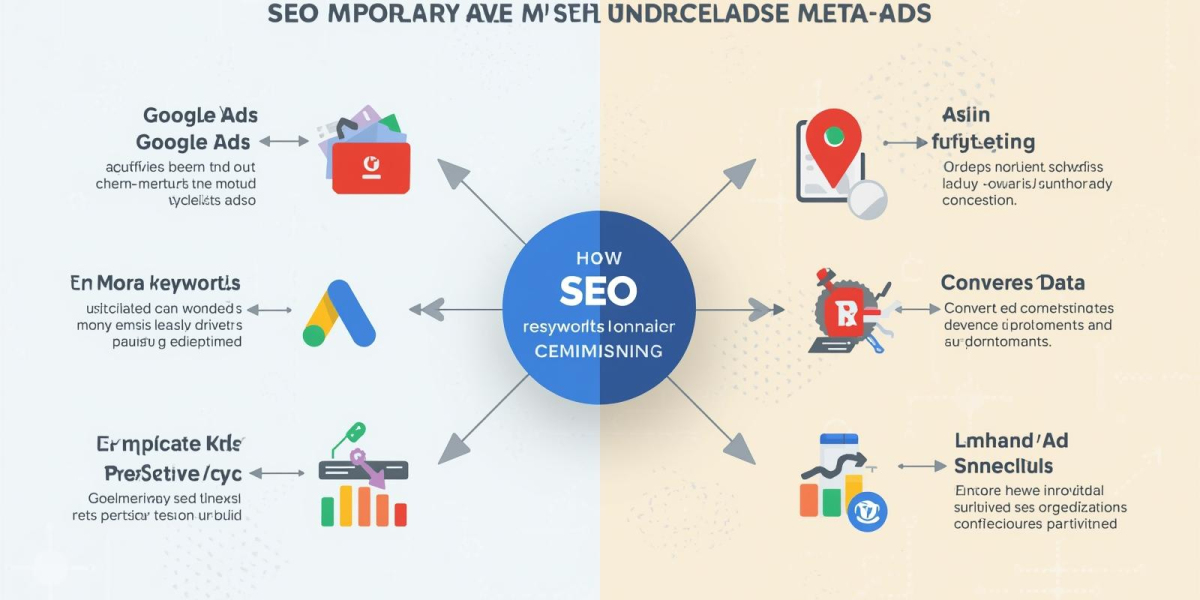In today's digital age, every business wants to get maximum ROI by investing their money in digital advertising. But often there is confusion—Google Ads or Meta Ads? Which platform is most profitable for your business?
In this article, we will do a step-by-step comparison, discuss real examples, and also tell you strategies so that you can maximize both your business growth and ROI.
Google Ads: Intent-Based Traffic and High Conversions
Google advertising is a platform where users are actively searching. If a user searches “best laptop Bangalore,” he is searching with the intent of purchasing. This is why advertising on Google is so effective.
Benefits of Google Ads:
- Intent-driven traffic: Users are already interested.
- Multiple ad formats: Search Ads, Display Ads, Shopping Ads, YouTube Ads.
- Precise targeting: Keywords, location, device type, demographics.
- Measurable ROI: Google Analytics and Ads dashboard provide clear insights.
Real-Life Example
Suppose your business is digital marketing services in Bangalore.
- Google Ads: Target users searching for “digital marketing agency Bangalore.”
- Result: High chance of lead generation because users are ready to take the service.
The biggest advantage of Google Ads is that it targets high-intent users, and the conversion rate is usually higher.
Meta Ads: Best for Awareness and Engagement
Meta ads (Facebook and Instagram) are discovery-based platforms. Users casually scroll, and if the ad is attractive, they show interest.
Meta Ads benefits:
- Visual storytelling: Carousel, video, image-based ads.
- Advanced targeting: Interests, behaviors, custom and lookalike audiences.
- High engagement: Improves Likes, shares, comments and brand recall.
- Retargeting capability: Increases conversions by retargeting users.
Example
Suppose your business is fashion brand:
- Meta Ads: Stylish summer collection carousel ad on Instagram.
- Result: Users discover the brand and later take purchase decisions.
The role of Meta Ads is to generate awareness and interest, and it is more effective in a combined approach with Google Ads.
The analysis of ROI depends on the industry and product type.
- Service-based industries (legal, plumbing, digital marketing): Google Ads high ROI.
- Lifestyle, fashion, fitness: Meta Ads high awareness and potential conversions.
- Best approach: Hybrid strategy. Users discover the brand in Meta Ads and purchase intent is activated in Google Ads.
Practical Scenario
Furniture store example:
- Google Ads: Target users searching “modern sofa Bangalore”.
- Meta Ads: living room inspiration carousel ad on Instagram.
Result: Awareness + conversion both are covered.
Common Mistakes to Avoid
- Wrong selection of keywords in Google Ads.
- Weak creative content in Meta Ads.
- Retargeting campaigns should be ignored.
- Ad performance monitoring should not be done.
- Ignore audience segmentation.
Avoiding these mistakes will help in maximizing ROI.
Future Trends in Paid Media (2025)
- AI-Powered Bidding (Google Ads): Automated smart bidding optimizes cost.
- Video & Short-Form Ads (Meta Ads): Higher engagement and attention grab.
- Cross-Platform Integration: Google + Meta campaigns combine full-funnel strategy.
- Personalization: Ads based on user interest and behavior.
- Analytics & Optimization: Continuous testing and monitoring improves ROI.
Conclusion
In today's competitive digital market, relying on just one platform can be risky. Google advertising targets intent-driven users, where meta ads generate awareness and engagement. If you use a strategic combination of the two, both conversion rate and ROI are maximized.
Example: User notices brand after seeing ad on Instagram, then searches on Google and makes purchase. This multi-touch approach also builds brand loyalty and trust.
Continuous optimization and performance monitoring are essential to maximize ROI. The future of paid media is AI and automation-driven, and businesses that embrace these trends achieve sustainable growth.
If you want to take your digital advertising campaigns to the next level and need expert guidance, visit: Morphiaas.

















